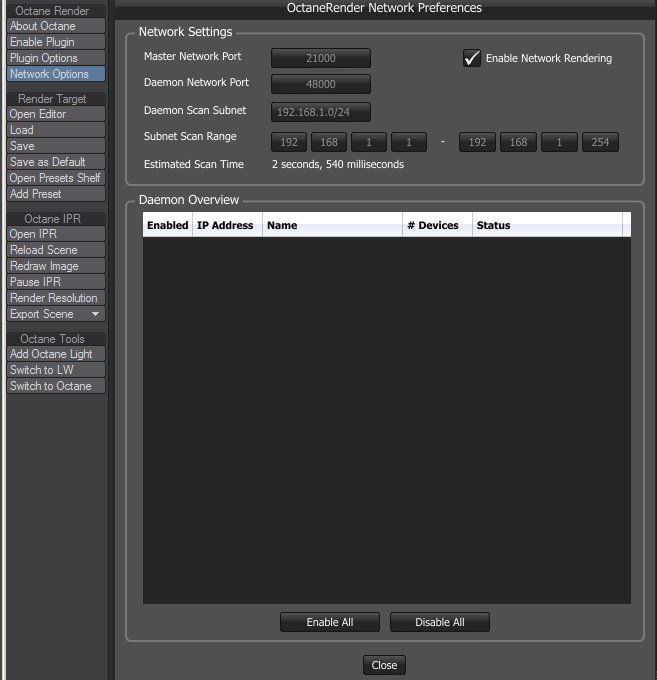
Octane render for Lightwave 2.0 supports the native Octane network rendering. The network rendering is used for the IPRProvides artists a quick preview of the image prior to the final render, and efficiently allows for adjusting some elements in the scene such as lights, shaders and textures interactively. An IPR image contains shading and lighting data including some for visibility, in addition to the software render. and for the final F9/F10 rendering if it is enabled.
There is a command in the main menu to open the standard octane network rendering control panel.

Network rendering allows additional computers to be utilized in rendering images. OctaneRender distributes compiled render data and not scene data, so no file management is required by the user. Conceptually it is similar to working with additional GPUs by allowing the distributed rendering of single images over multiple computers connected through a fast local area network. Network rendering requires a master and one or more slaves on different computers. The OctaneRender instance that drives the rendering is referred as the “master” and the OctaneRender instances that are helping are referred as the rendering “slaves”.
If network render doesn’t work (you always get 0 slaves available), it may be a Firewall problem. To resolve this, going into the Windows Firewall Settings, Inbound Rules, and delete all the Layout [your version] rules. Then run Layout and click “Allow access” (with Private Network ticked) to all the Windows Security Alerts.
Check the Octane Standalone network rendering documentation to configure the rendering slaves: